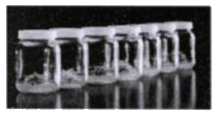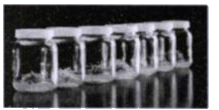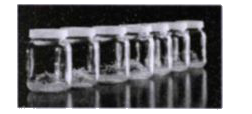The rate of increases of bacteria in a certain culture is proportional to the number present. If it doubles in 5 hr., then in 25 hr., its number would be
8 times the original
16 times the original
32 times the original
64 times the original
The correct Answer is:C
Step by step video, text & image solution for The rate of increases of bacteria in a certain culture is proportional to the number present. If it doubles in 5 hr., then in 25 hr., its number would be by Maths experts to help you in doubts & scoring excellent marks in Class 12 exams.
Topper's Solved these Questions
- BOOK - TARGET PUBLICATIONCHAPTER - DIFFERENTIAL EQUATIONS EXERCISE - COMPETITIVE THINKING124videos
DIFFERENTIAL EQUATIONS
- BOOK - TARGET PUBLICATIONCHAPTER - DIFFERENTIAL EQUATIONS EXERCISE - EVALUATION TEST25videos
DIFFERENTIAL EQUATIONS
- BOOK - TARGET PUBLICATIONCHAPTER - DIFFERENTIAL EQUATIONS EXERCISE - EVALUATION TEST25videos
DIFFERENTIAL EQUATIONS
- BOOK - TARGET PUBLICATIONCHAPTER - DEFINITE INTEGRALSEXERCISE - EVALUATIO TEST30videos
DEFINITE INTEGRALS
- BOOK - TARGET PUBLICATIONCHAPTER - DIFFERENTIATION EXERCISE - EVALUATION TEST30videos
DIFFERENTIATION
Similar Questions
The rate of increase in the number of bacteria in a certain bacteria culture is proportional to the number present. Given the number triples in 5 hrs., find how many bacteria will be present after 10 hours. Also find the time necessary for the number of bacteria to be 10 times the number of initial present. [Given loge3=1.0986, e2.1972=9 ]
View SolutionThe rate of increase of the bacteria in a culture is proportional to the number of bacteria present and it is found that the number doubles in 6 hours. Prove that the bacteria becomes 8 times at the end of 18 hours.
View Solution
Knowledge Check
- Question 1 - Select One
The rate of increase in the number of bacteria in a certain bacteria culture is proportional to the number present. If in 5 hrs the number triples, then in 10 hrs, the number of bacteria present is
A18 times the originalB12 times the originalC6 times the originalD9 times the original - Question 2 - Select One
The rate of increase in the number of bacterai in a certain becteria culture is propotional to the number present at that time. If is found that the number doubles in 4 hours, then at the end of 12 hours, the number of bacteria are
A4 times the originalB6 time the originalC8 times the originalD10 times the original - Question 3 - Select One
Read the following text and answer the following questions on the basis of the same: The rate of increase in the number of bacteria in a certain bacteria culture is proportional to the number present. Given that the number triples in 5 hours.

The bacteria becomes 10 times in ___________ hours.A5log7B5log10log3C5log3Dlog(1053)
∫1Kxdx=_________ .
View SolutionRead the following text and answer the following questions on the basis of the same: The rate of increase in the number of bacteria in a certain bacteria culture is proportional to the number present. Given that the number triples in 5 hours.

The general solution is _________ .View SolutionRead the following text and answer the following questions on the basis of the same: The rate of increase in the number of bacteria in a certain bacteria culture is proportional to the number present. Given that the number triples in 5 hours.

If 'N' is the number of bacteria, the corresponding differential equation is ____________ .View SolutionRead the following text and answer the following questions on the basis of the same: The rate of increase in the number of bacteria in a certain bacteria culture is proportional to the number present. Given that the number triples in 5 hours.

If N0 is the initial count of bacteria, after 10 hours the count is __________ .View SolutionThe rate of increase in the number of bacteria in a certain culture is propotional to the number present at that time. After 2 hours there are 600 bacteria and after 8 hours the count is 75000, then the population will be 200000 after
View Solution

